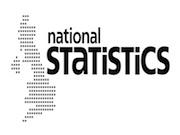Youth unemployment could hit 1 million

The latest unemployment figures revealed by Office of National Statistics (ONS) show that unemployment amongst 16 to 24 year olds is likely to rise and reach the one million mark in the UK.
Based on interviews with 2,311 16-24 year olds from across the country, the statistics show that 26 per cent of those from deprived homes believe that ‘few’ or ‘none’ of their career goals are achievable, compared with just seven per cent of those from affluent families.
The report warns of an aspiration gap developing within Britain’s poorest families because of a lack of confidence amongst young people and their belief that ‘people like them, from poorer homes, don’t succeed in life’.
Many experts are attributing this worrying trend to an ever widening ‘skills gap’.
Carmen Watson, managing director of independent employment firm Pertemps Recruitment Partnership, said: “The government needs to extend funding for education providers to get the youth ‘work-ready’ by changing their mentalities towards work and providing them with the necessary skill sets needed to break this cycle of unemployment and low aspirations”.
The Chancellor, George Osborne, has also highlighted the skills gap as a real danger to the UK.
“The UK is falling behind other developed countries in terms of having a skilled and flexible work force, a situation that would potentially undermine any future economic growth,” Mr Osborne warns.
It is believed that Apprenticeships schemes should prove an attractive solution to both employers and perspective employees as university fees increase.
Responding to the ONS statistics, Dr John Philpott, chief economic adviser at the Chartered Institute of Personnel and Development (CIPD), said: “The figures are something of a conundrum for economists. We’re familiar with the phenomenon of jobless growth but the UK economy is at present creating jobs without growth.
“Today’s figures show regular pay, excluding bonuses, rising at an annual rate of just 1.9% in the private sector and 2.1% for the economy as a whole at a time when retail price inflation is increasing by more than 5%.
“The ongoing real pay squeeze is thus helping an anaemic economy support employment as well as offsetting fears of an inflationary pay-price spiral. If this continues the pain of economic austerity is likely to be observed as a widespread fall in living standards rather than a further sharp rise in unemployment.”
Aastha Gill






Responses